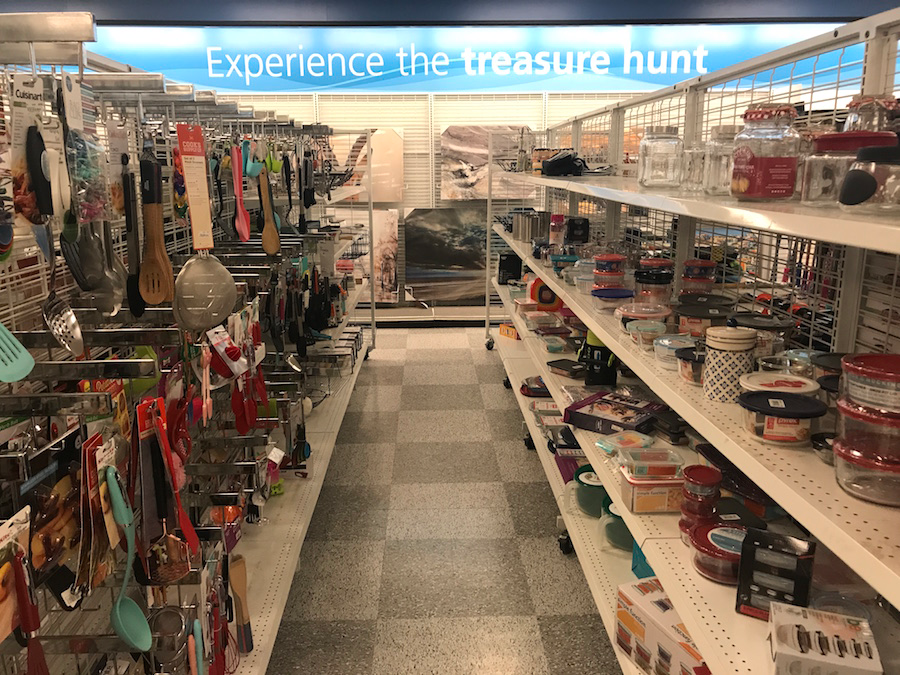- Discount stores such as TJ Maxx and Ross Stores are known to be one of the few bright spots in retail.
- The two chains sell well-known brands at 20-60% off full prices and offer customers a bargain-hunt shopping experience.
- Here’s how the shopping experience at TJ Maxx and Ross Stores compares.
The American retail industry isn’t dying – it’s divided.
A recent survey by the management-consultancy firm Deloitte found that the most successful areas of retail were at the two extremes of the spectrum: high-end retailers and price-conscious stores. Those trying to follow a “jack of all trades” model are missing out.
The survey of 2,000 people found that only 20% of consumers were better off last year than they were in 2007 and that 80% had less money to spend on shopping than they did in the past.
Consumers are hungry for bargains, and discount retailers are booming.
After comparing two of the US's biggest dollar-store chains, Dollar Tree and Dollar General, we decided to put two of the best-known off-price chains to the test.
Ross Stores and TJ Maxx have a similar premise: offer a wide selection of well-known brands at discounted prices, providing customers a treasure-hunt shopping experience that's hard to replicate online.
In both cases, it's all about shopping in the store. While TJ Maxx has built out its online offering somewhat, Ross Stores has not - the only way to shop there is on foot.
Despite their similarities, Ross Stores has outpaced TJ Maxx in same-store sales growth. Ross Stores' same-store sales were up 4% last year, while Marmaxx - Marshalls and TJ Maxx - reported a modest 1% increase.
It may well come down to price. Citing the investment-management firm Cowen, Bloomberg reported in 2016 that the average item at TJ Maxx costs $14 to $15 compared with $10 at Ross.
Here's how the shopping experience compares.
Our first stop was Ross Stores in Center City, Philadelphia. Ross, the largest off-price retailer in the US, has 1,432 locations in 38 states.

Ross has been hailed as a "retail treasure" by analysts, but our first impression wasn't great.

The store was split into two sections: women's apparel on one side, and men's, kids, and homewares on the other.

At the front of the store, signs gently reminded shoppers not to open packages. It's instantly apparent that this is not going to be a high-end shopping experience.
In the jewelery section, we spotted rings for as little as $6, though most pieces were locked up in a cabinet.

Ross Stores has a tighter handle on inventory levels than department stores, meaning fewer markdowns and new items hitting stores more frequently.

Source: Morningstar
Analysts consider off-price retailers to be Amazon-proof, as it's hard to replicate the bargain-hunt shopping experience online.

As the emphasis here is on the bargain, there is less of a focus on the actual shopping experience.

"We think consumers have become more price-oriented and willing to trade customer service and an expensive store design for 20%-60% discounts on the same brand-name merchandise," Bridget Weishaar, a Morningstar analyst, wrote in a research note in April.
In some areas of the store, the racks were bare ...

... and the clothing felt unfashionable.

But ultimately, it was very cheap.

The store layout was strange. There were snacks in bins next to women's clothes ...

... and lots of space was left unused.

Large signs informed customers that Ross is 20-60% cheaper than department stores.

Ross has benefited from recent department-store closings in terms of gaining new customers and opening up more possibilities with brands left with fewer places to sell their products.
Source: Morgan Stanley
The other half of the store was devoted to men's, kid's, and homeware.

In a call with investors in March, Ross Stores CEO Barbara Rentler said children's wear was the best-performing category during the fourth quarter of 2017.

Source: Ross Stores
Children's clothing was divided into styles, such as sets, dresses, and trousers.
The most impressive part of the store was its shoe collection for men, women, and kids. There was a good selection of well-known brands such as Nike, Adidas, Puma, and Michael Kors.

In the shoe section, we found that brands were often clustered together.

Ross has about 800 merchants who source from 8,000 vendors, according to Weishaar.
Some of the more expensive items were boxed up.

Almost half of the store was dedicated to homewares and furniture. This was a more organized department.

There was a ton of kitchenware ...

... and expensive-looking gourmet food.

Ross proudly reminds its shoppers that this is a "treasure hunt."

There is no TJ Maxx in central Philadelphia, so we headed to a mall just outside the city, in Columbus Crossing.

This store was almost brand-new - it opened in November.
TJ Maxx instantly set a different tone. The front of the store had a department-store-style layout with a curated selection of seasonal clothing.

It felt less like a treasure hunt, as there were multiple pieces of the same style.
Out first impressions were great. Handbags were arranged by color, making it easy to shop for the style you want.

We spotted some expensive brands.

It felt very similar to any full-price store, except designer products cost significantly less here.

The beauty section at TJ Maxx had a better mix of well-known brands. And unlike at Ross, it didn't look as if they had already been opened and tested.

In this section, we were reminded that this is still an off-price store.

Some areas were more chaotic.

As TJ Maxx is an international company, it stocks a diverse mix of brands, sourcing products from over 20,000 vendors in 100 countries.

Source: Morningstar
The shoe section was less impressive than the one at Ross, but we came across a wide selection of the same styles.
And the designs were targeted to all ages.

We came across a section of clothing that was specific to that location.

The product selection is tailored to each store because an inventory-management system analyzes data to identify what customers in each location want most.
There was a lot of variety in the kids' section of the store, and it was easy to shop.

We spotted dozens of Michael Kors, Ralph Lauren, and Calvin Klein products around the store. These companies have all said they are looking to scale back from the off-price channel to improve their brand image.

Source: Business Insider
In February 2017, TJ Maxx pulled away from the Ivanka Trump brand and told employees to throw away signs advertising it. We found a pair of Ivanka Trump trousers hidden in the clearance section.

Source: The New York Times
This location benefited from having a HomeGoods store connected to it.

TJ Maxx's parent company, TJX Companies, also owns Marshalls and HomeGoods.
There was a massive selection of homeware here.

As we headed to the cashier, we came across TJ Maxx's food section. Here, you could find anything from Himalayan sea salt to an expensive-looking jar of pickles. According to Bon Appetit, TJ Maxx stocks food items made especially for it, rather than selling overstock.

One manufacturer told the magazine that TJ Maxx would buy mixed cases because it didn't want too much of the same item.
"They do this to create a sense of FOMO," David Bell, a marketing professor at Wharton, told Bon Appetit.
He added: "When it's gone it's gone."
Source: Bon Appetit
The walk to the cashier is the last chance shoppers have to grab a bargain — and there's more than enough for the taking. TJ Maxx positioned some of its smaller items and grab-and-go produce here for customers making a speedy visit.

Our verdict: TJ Maxx was the clear winner here. This location had an advantage over Ross, as it had recently opened.
But it wasn't just the glitzier store design and better layout - TJ Maxx's assortment was also more impressive.
Ross looked and felt like the cheaper store, and it is. That its same-store sales growth is better than TJ Maxx's is telling of the current climate in retail, as many customers prioritize price over everything else.

